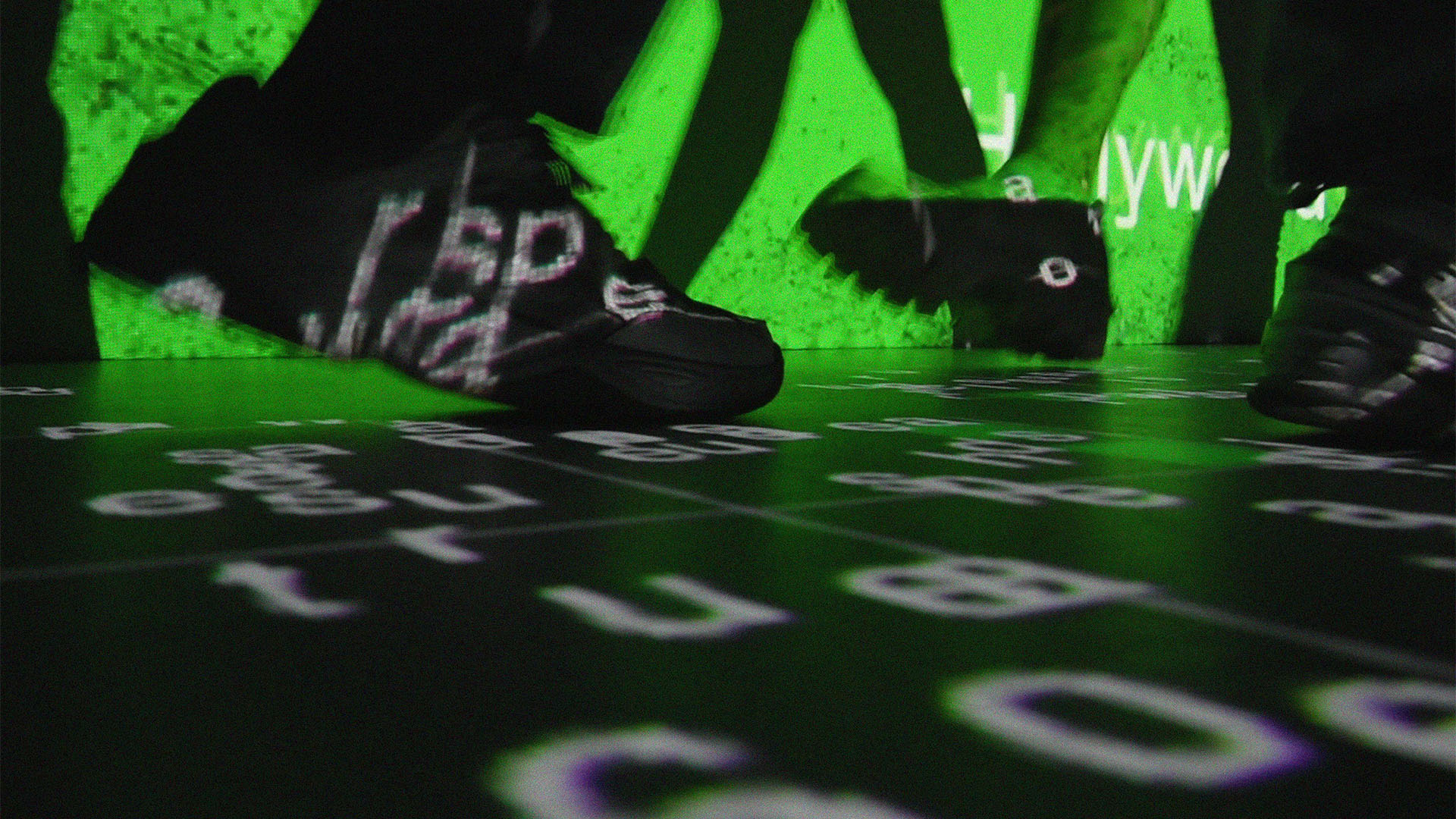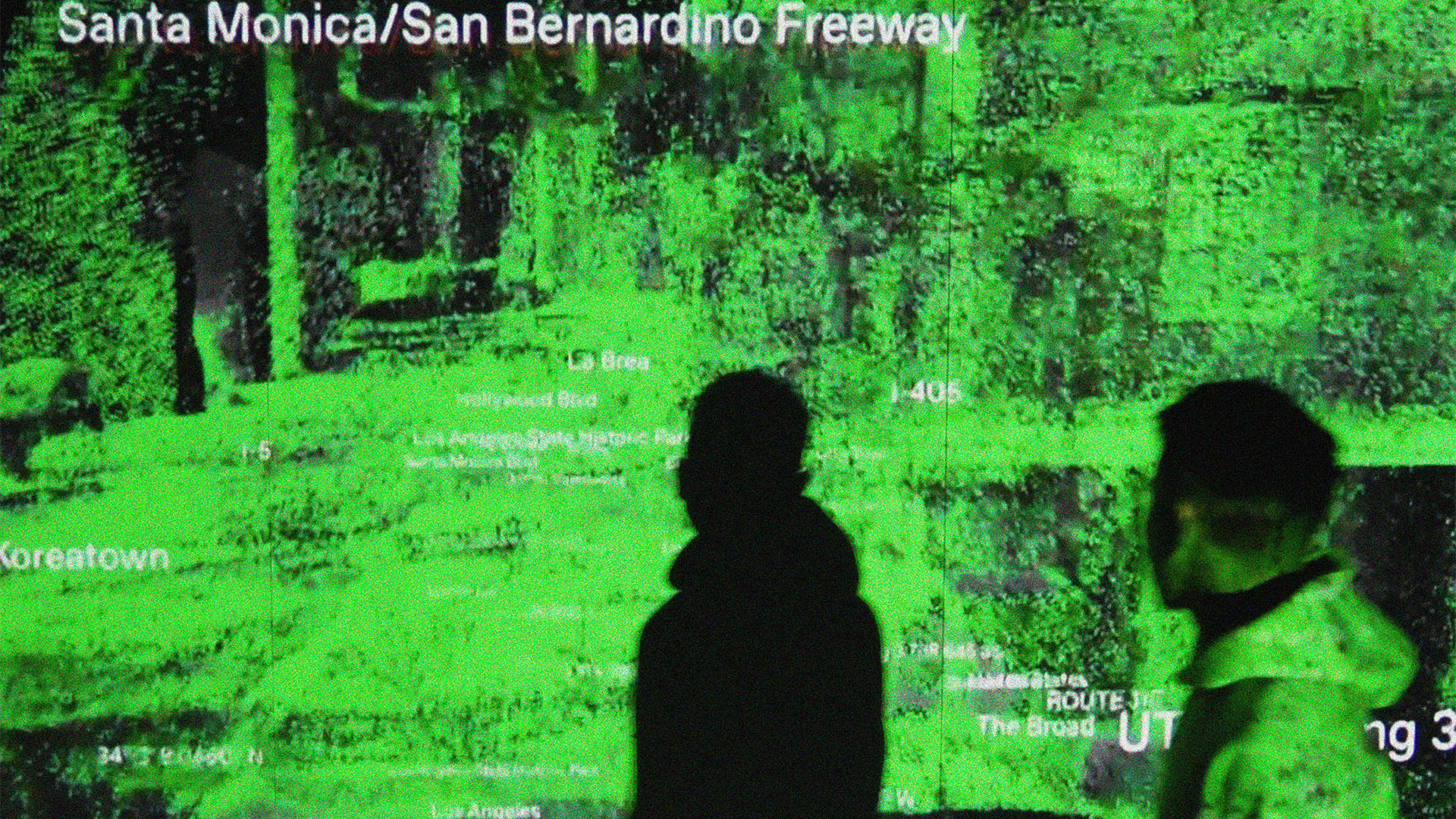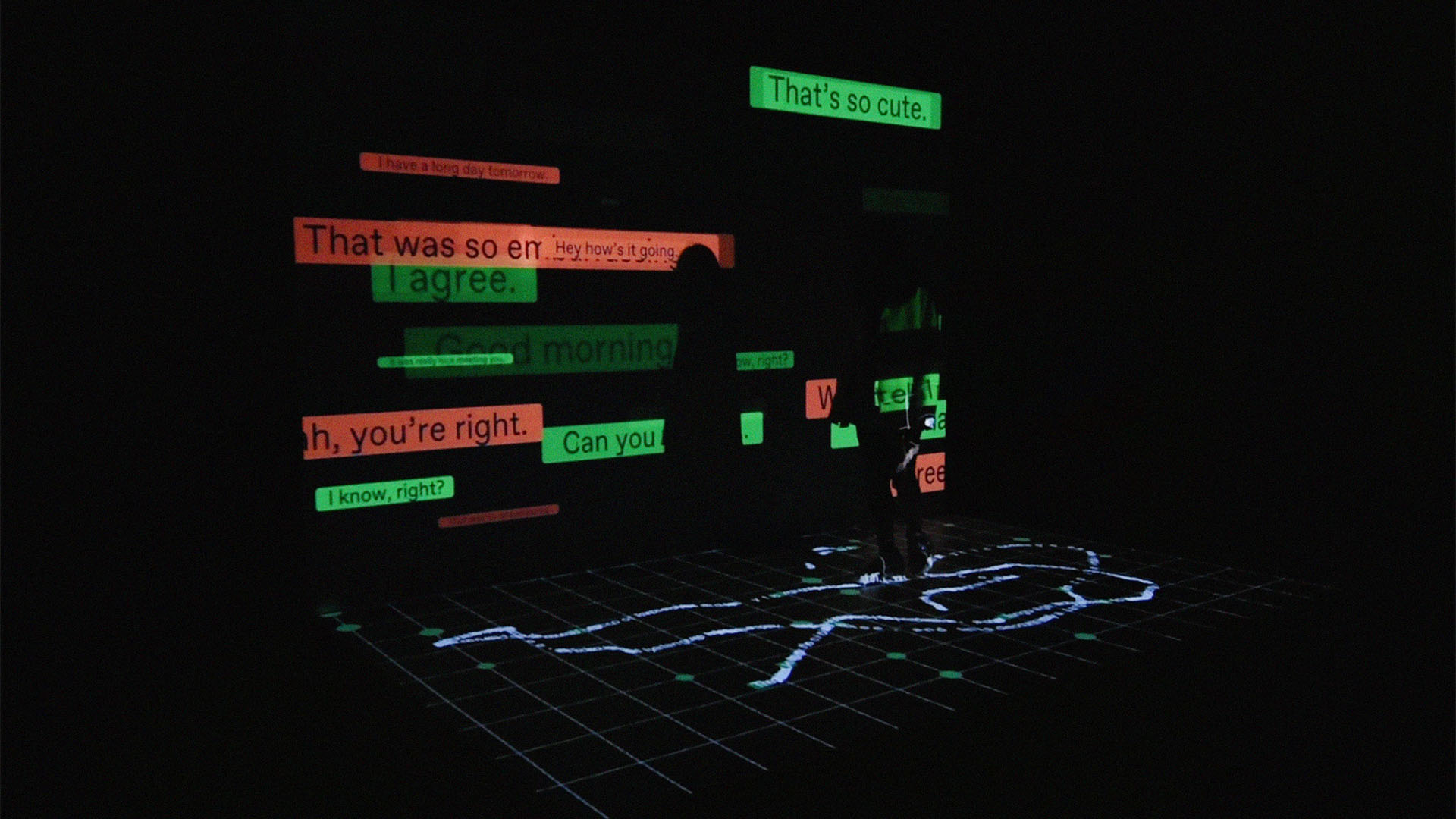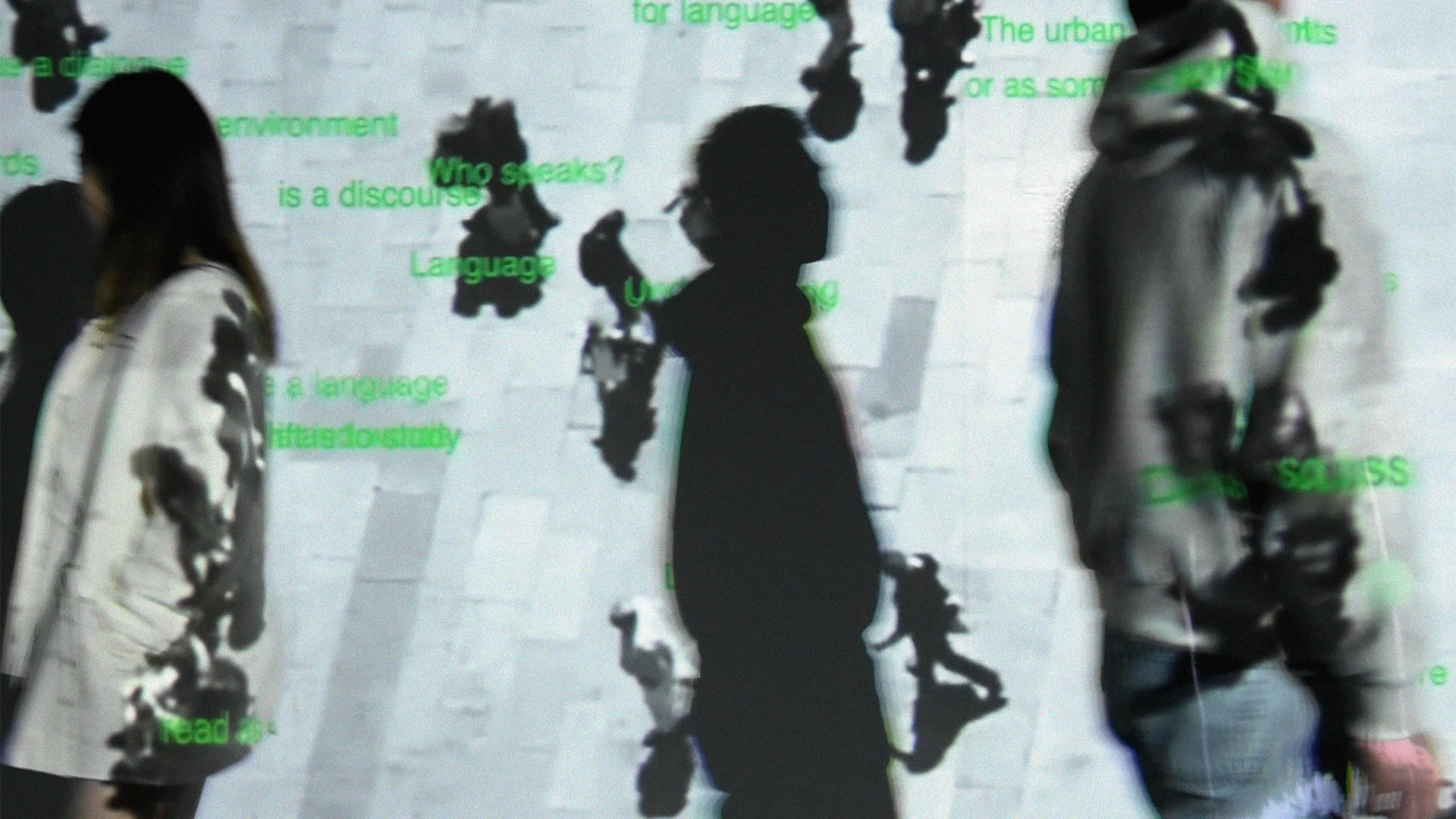SOMA: Space, Observation, Mapping, Action
The complex and interdependent relationship between people and urban space has been a central issue in interdisciplinary discussions that transcend the limits of geography and involve multiple fields such as anthropology, psychology, history, sociology, ecology, and art. The concept of this project is rooted in the term “Psychogeography,” developed by Letterist and Situationist International. Psychogeography is the intersection of psychology and geography. It focuses on the specific effects of the geographical environment on the emotions and behavior of individuals.
Agency
Kenny Zhang, Student Project
Practice Area
Client
ArtCenter College of Design
Industry
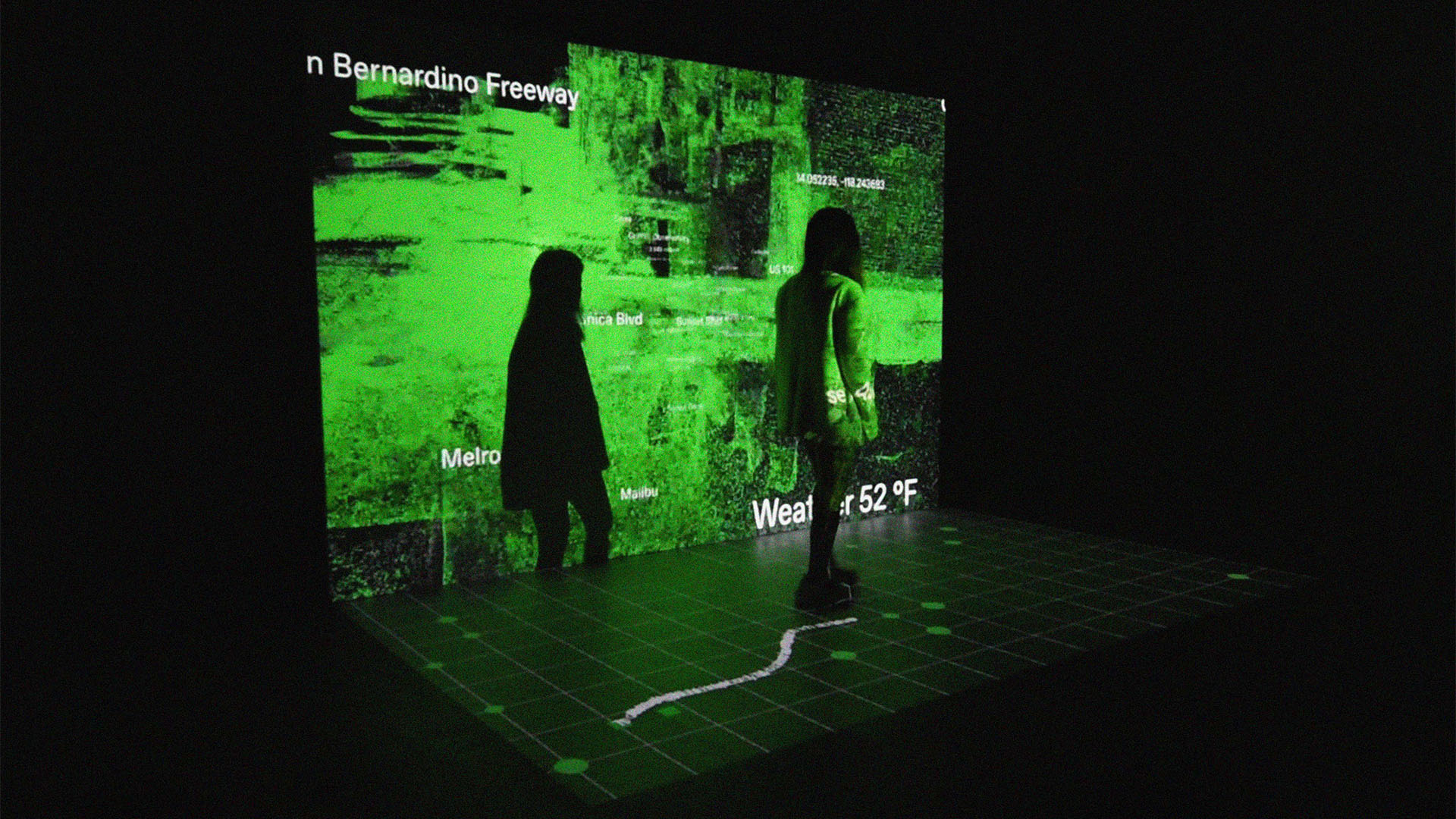
The Challenge
This project embraces the original concept of psychogeography but interprets it against the backdrop of contemporary society, proposing a new concept of “post-digital psychogeography.” It draws on earlier ideas of urban wandering but from technologically enabled vantage points. Emerging technologies are mapping and sensing the city in new ways. The explorations using emerging technologies propose a new understanding of psychogeography.
Project Vision
The word ‘SOMA’ for title derives from Greek, which means ‘body.’ And it represents each of us who lives in the city. It’s also the acronym for space, observation, mapping, and action. “Space” examines the complex relationship between individuals and their urban environment. “Observation” delves into how emerging technologies and creative methods such as language, sound, and image-making can be used to sense and record urban settings in innovative ways. Over time, the practice of mapmaking and graphic design has evolved simultaneously. “Mapping” explores how these practices can be used to interpret and understand the city from the perspective of its inhabitants. Finally, “Action” highlights the importance of proactively shaping the urban environment with human behavior and interaction. This project examines how we can read the city from the inhabitants’ perspective and how emerging technologies enable us to map and interact with the city space in new ways and provide a new psychogeography concept.
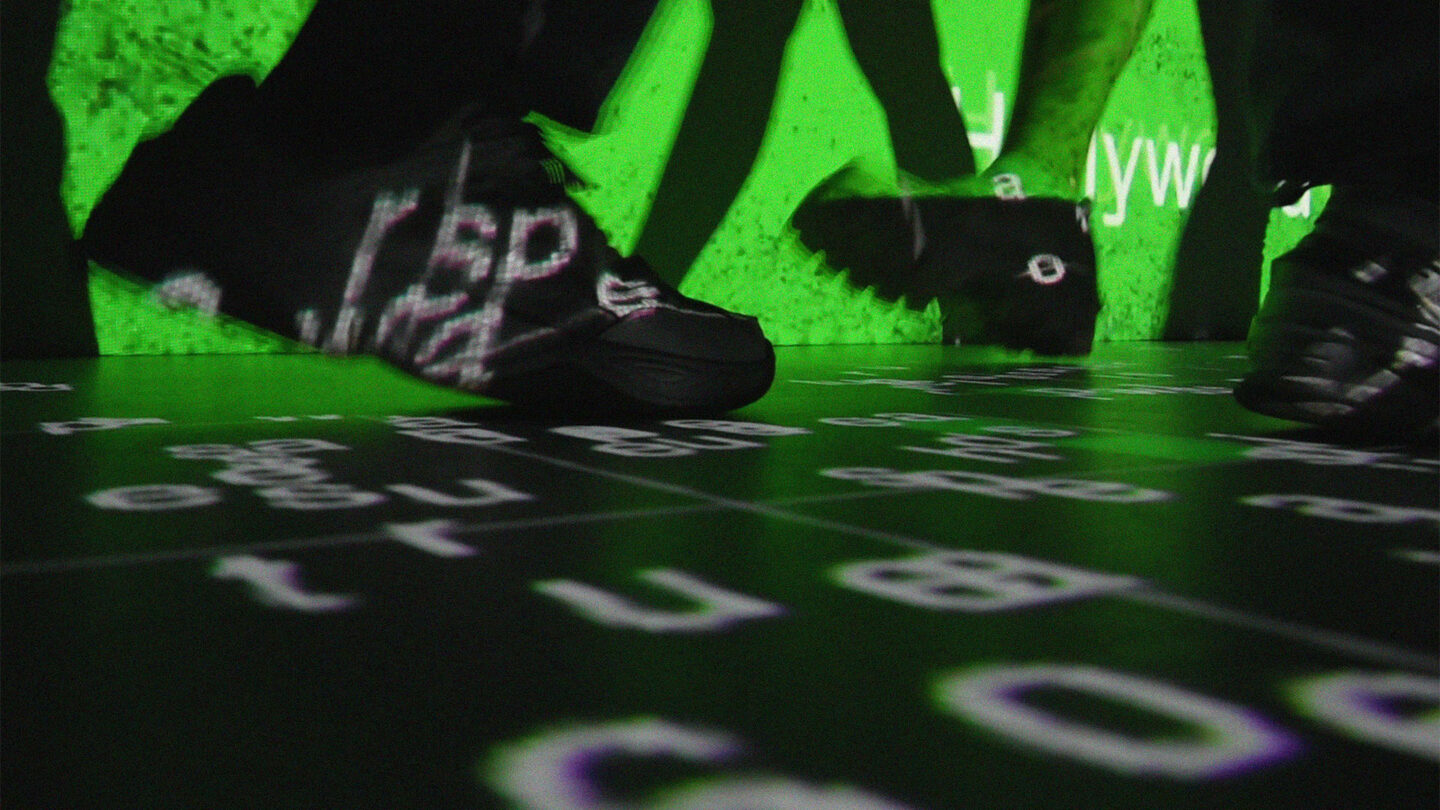
Path tracking
Kenny Zhang
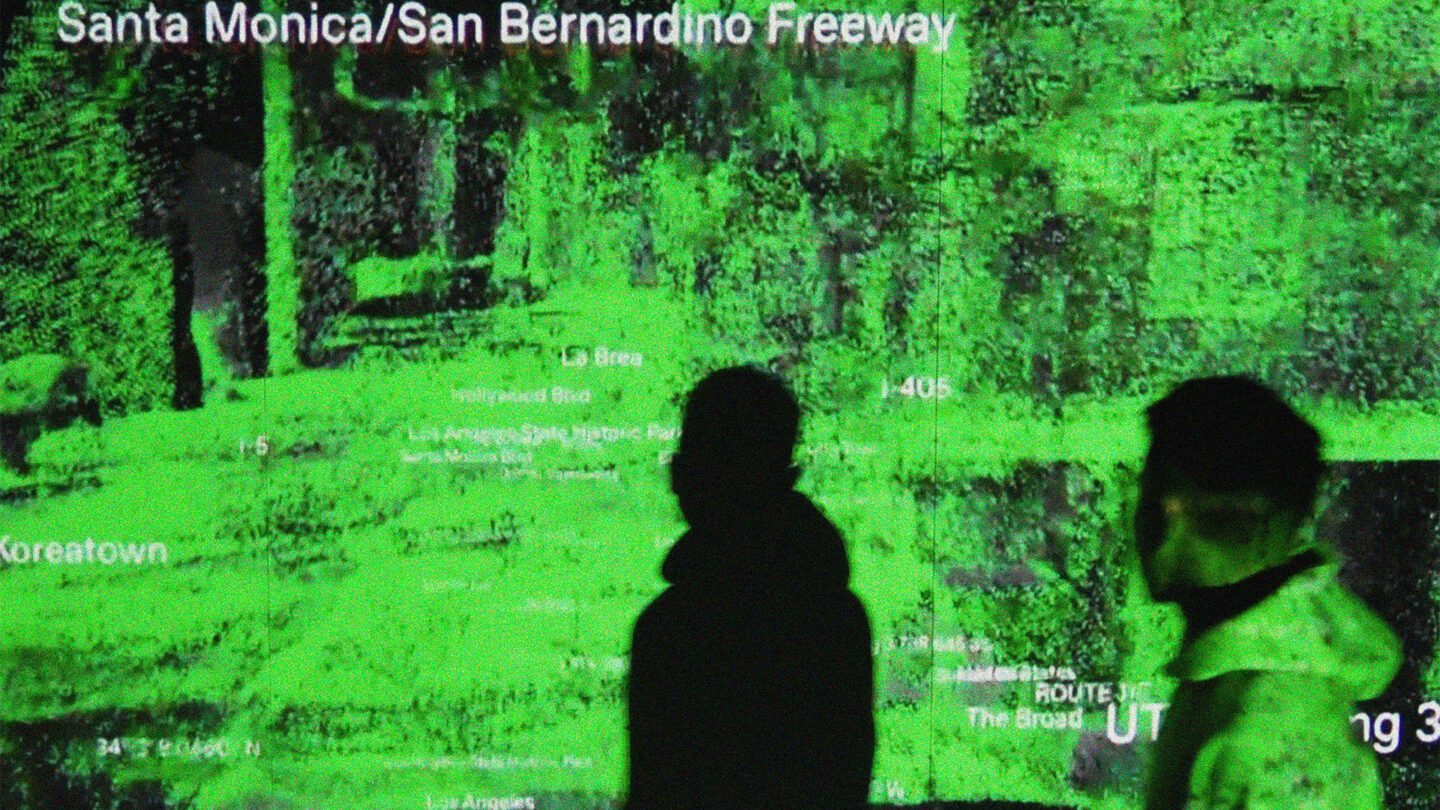
Scene 1
Kenny Zhang
Design + Execution
The installation creates a multi-sensory and multi-dimensional experience. It encourages people to experience the installation more than watch it. It consists of three scenes which are triggered by the walking of the viewer. When the viewer walks into the installation, the path tracking is generated by the viewer as the text and footnote. This is in a poetic way to convey the message that to walk or to drift is to study the city, and our footprint can live as a language.
Scene 1: The city speaks to its inhabitants.
The city is a discourse. By taking the idea of post-digital psychogeography, how can we experience the city differently? To digitize the city space, I use the pointcloud technique. Meanwhile, by combining with the typographic information experience, viewers can sense and observe the city from a digital perspective. The text conveys direct information to provide the viewer with a better understanding of the city.
Scene 2: Our cities are poems, our words are buildings.
Language lives inside us. Our daily conversation lives and spreads in the world, and in its invisible ways, it’s bigger than us; it has a different intelligence while it connects and envelopes us. By deciphering human conversation in daily life into the pure text, how would we feel that? From humanity’s perspective, this scene gives the viewer an immersive feeling of how humans live in the city and talk with others, but also beyond human ratio and emotion through the multi-sensory experience.
Scene 3: The city and the wanderer as a dialogue.
Roland Barthes’s idea that ‘the city is a discourse and this discourse is truly a language: the city where we are, simply by living in it, by wandering through it, by looking at it, is truly and mostly clear if we take into investigation all that surrounds us in the context of visual culture of the urban. Human walks into the city space as wanderers, and human and the city communicate with each other. By capturing the human walking in a bird’s eye view and simulating the text as people, this scene conveys how we speak to the city where we live.
The installation gives viewers an immersive experience through visual, typographic, and auditory perspectives. The city is the most elusive as we wander, read, and live through different approaches. As a designer, I believe design plays a critical role in shaping our perception, representation, and interaction with urban environments.
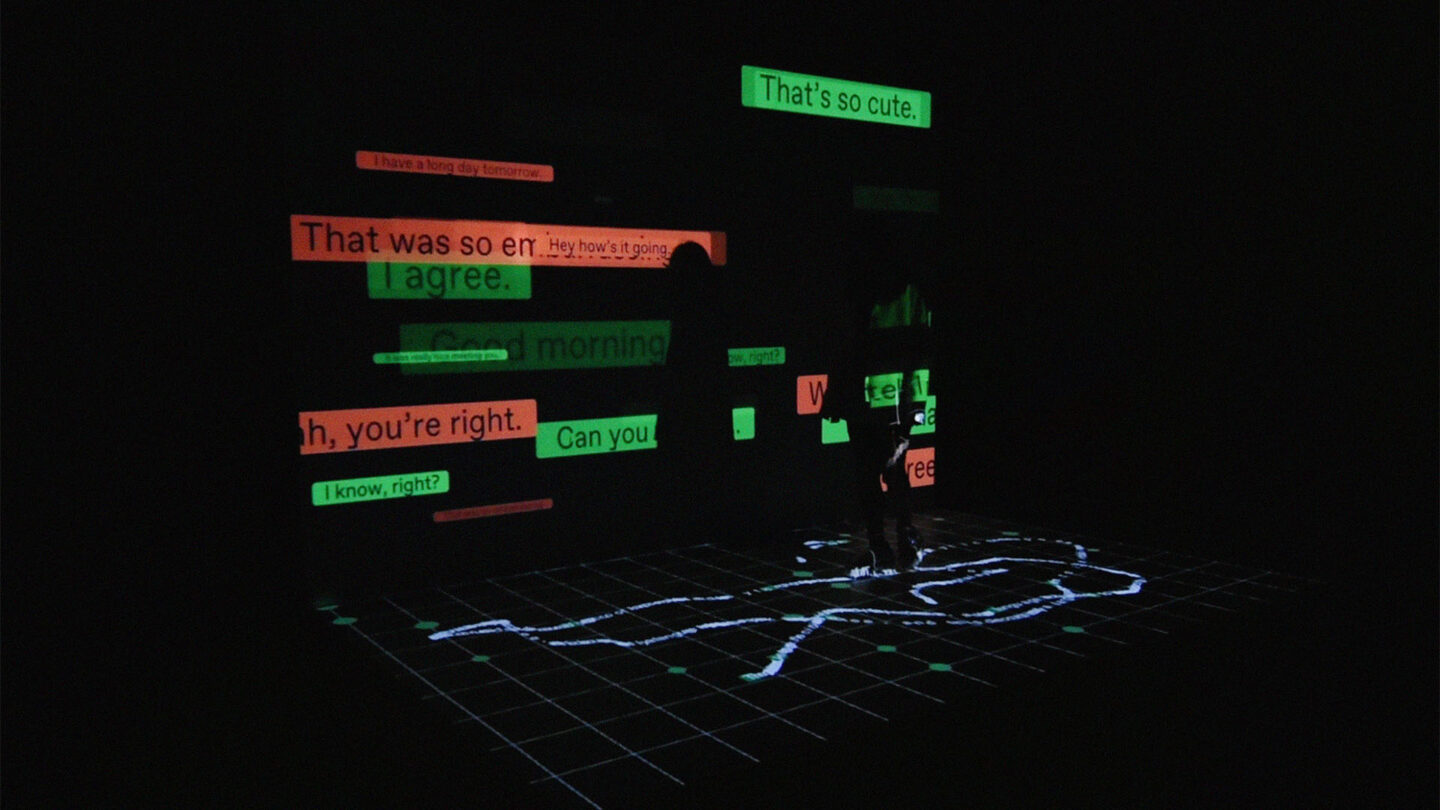
Scene 2
Kenny Zhang
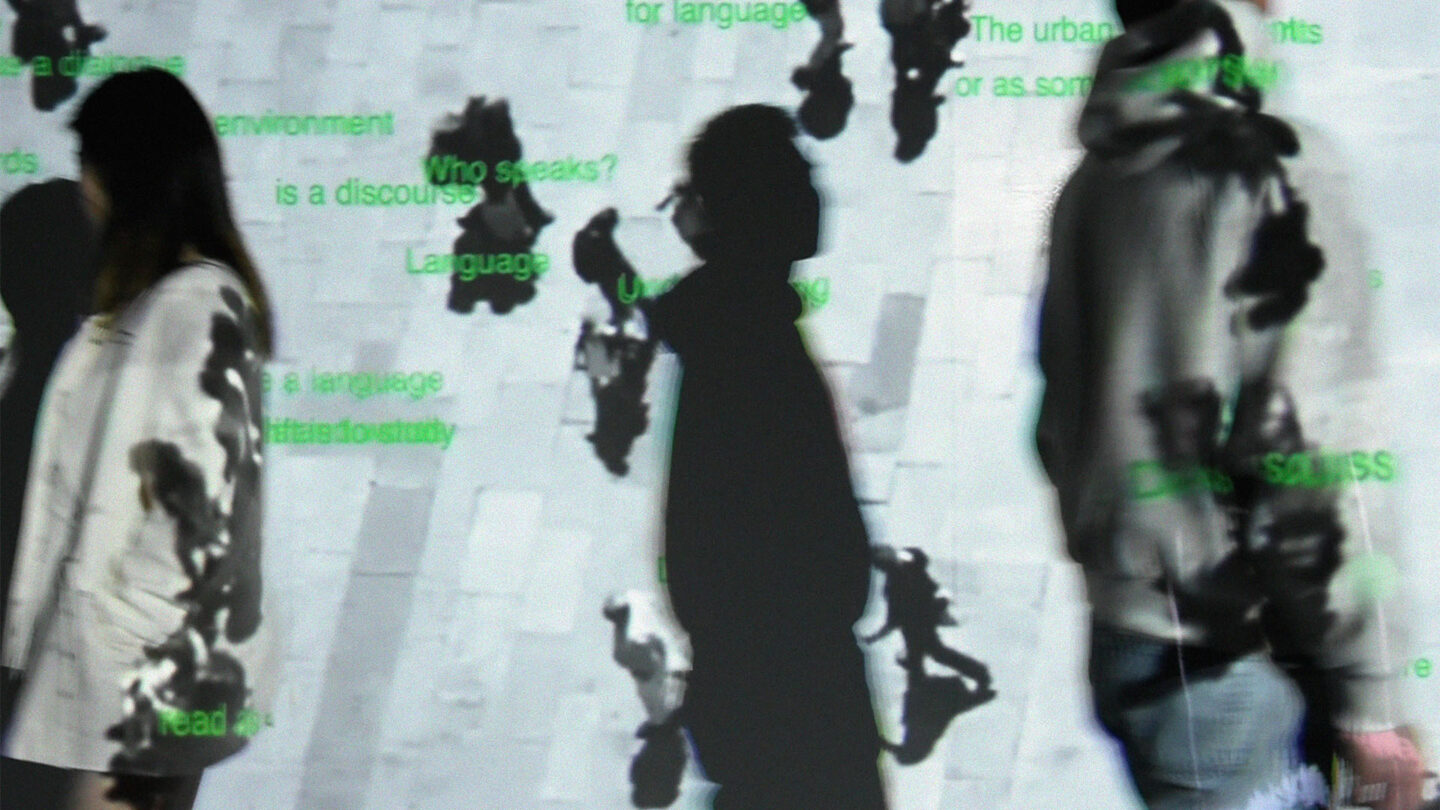
Scene 3
Kenny Zhang
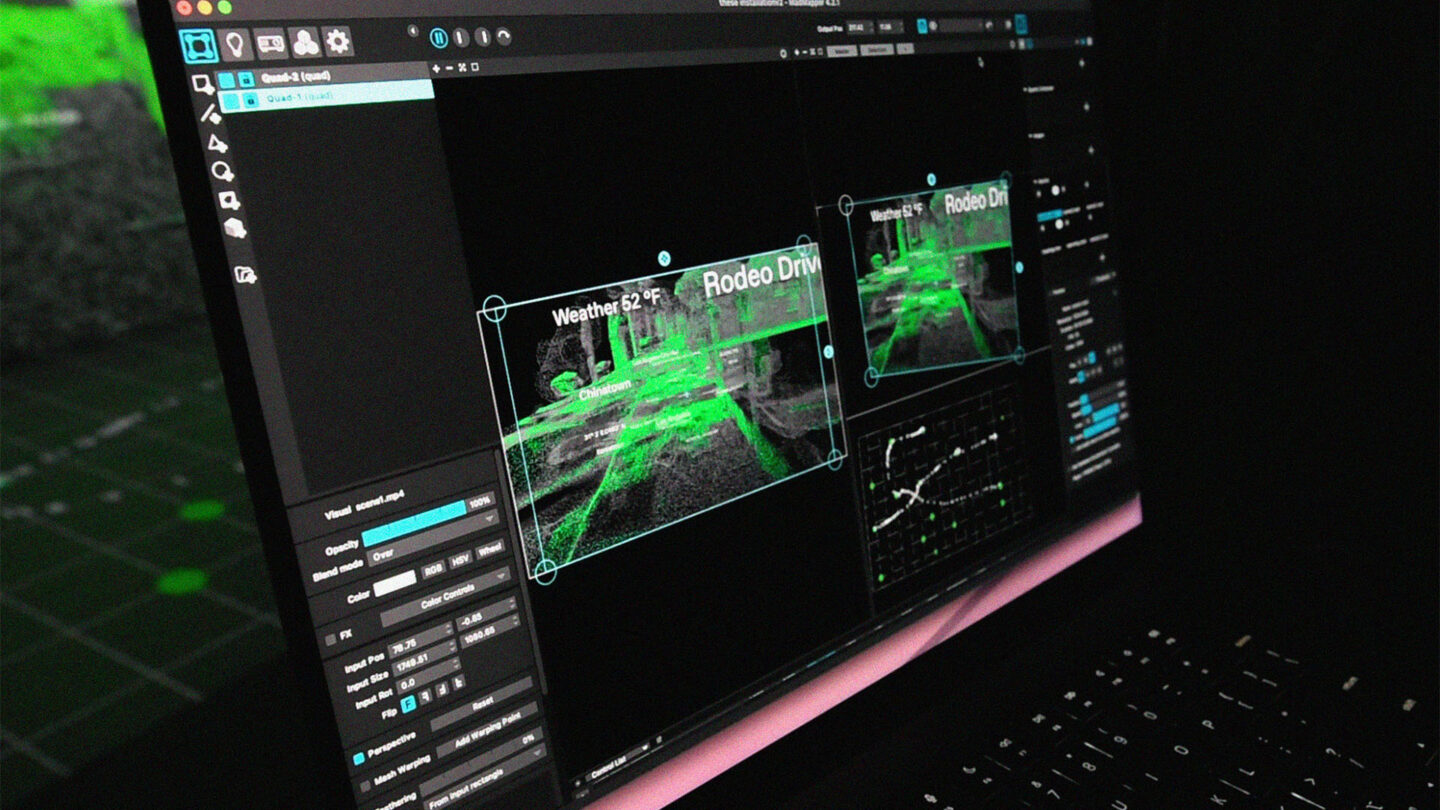
Installation mapping
Kenny Zhang
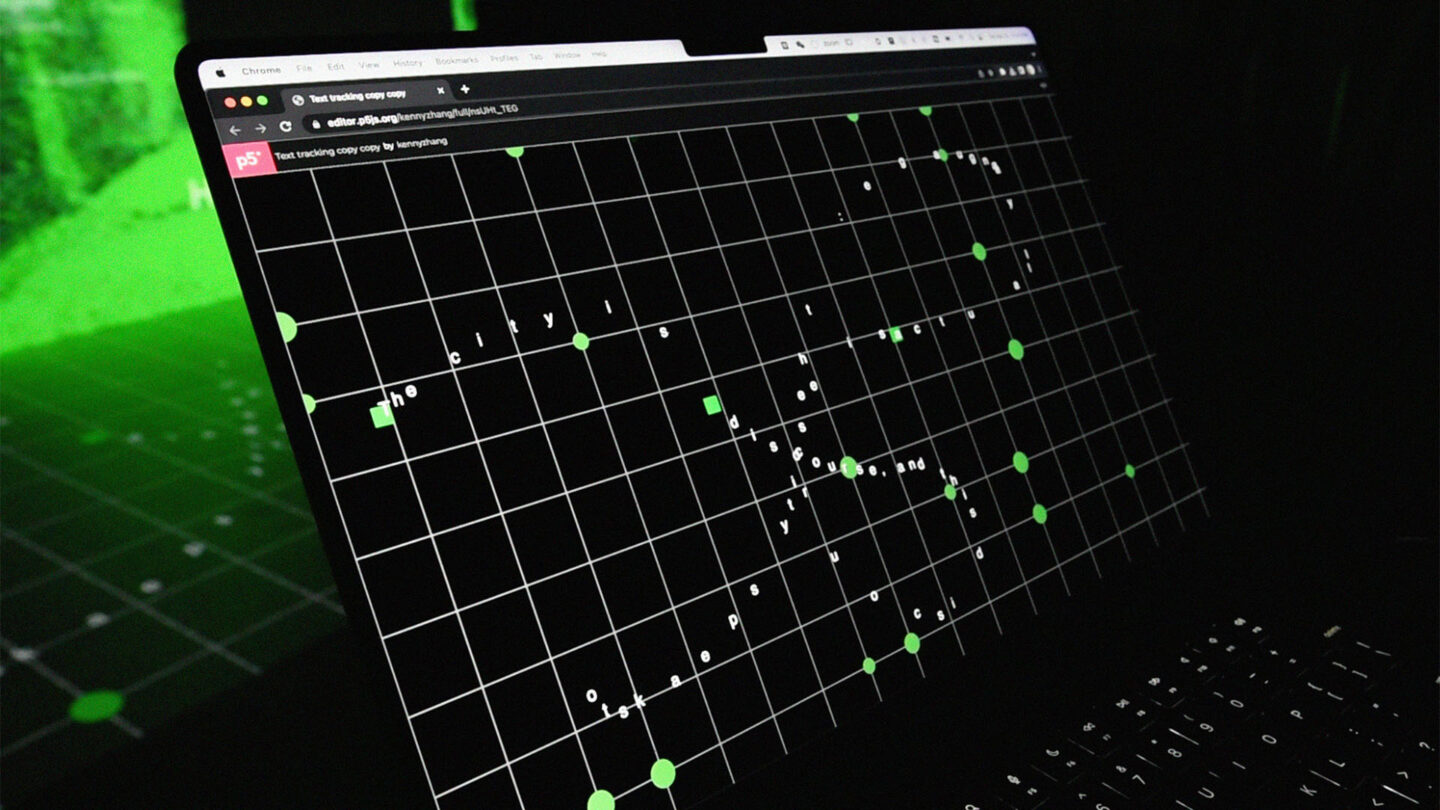
Generative design of path tracking
Kenny Zhang
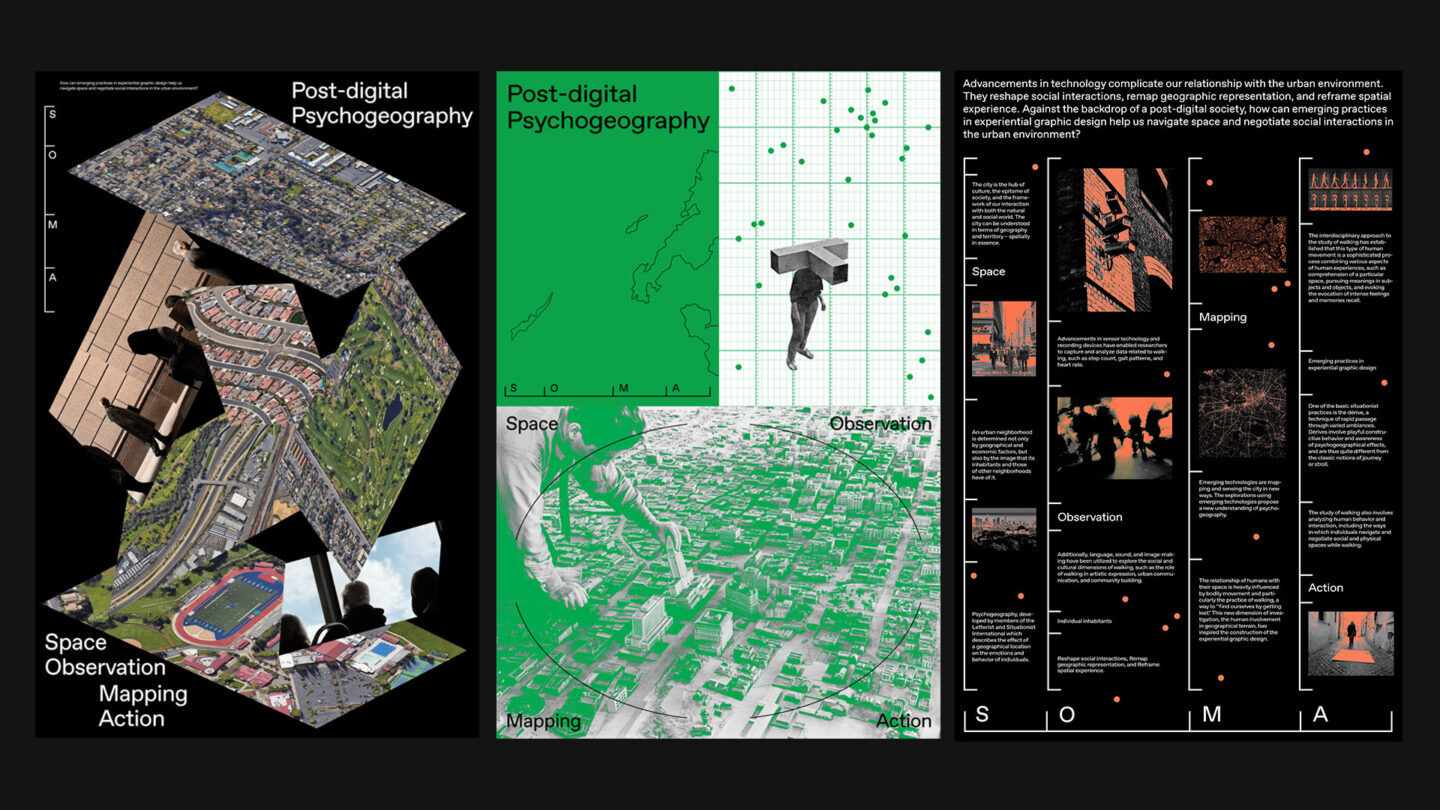
Installation posters
Kenny Zhang
Project Details
Design Team
Kenny Zhang
Photo Credits
Kenny Zhang
Open Date
April 14, 2023
